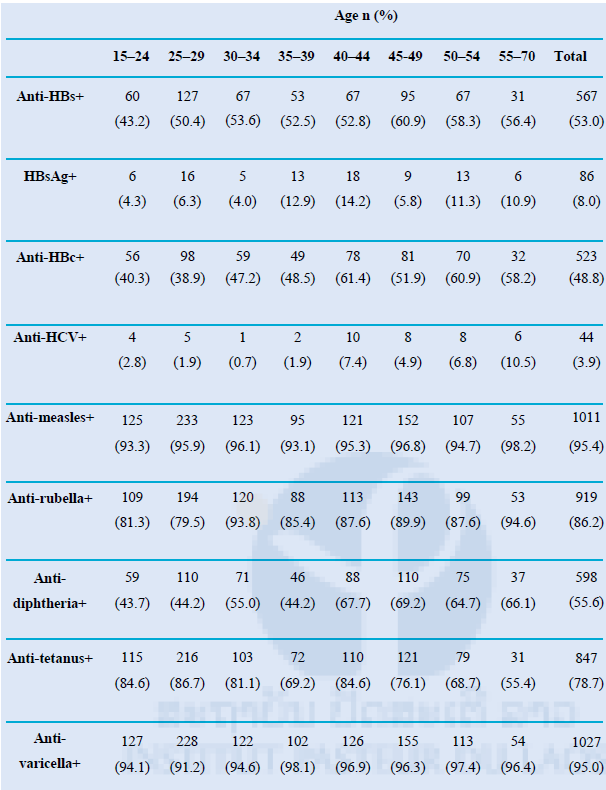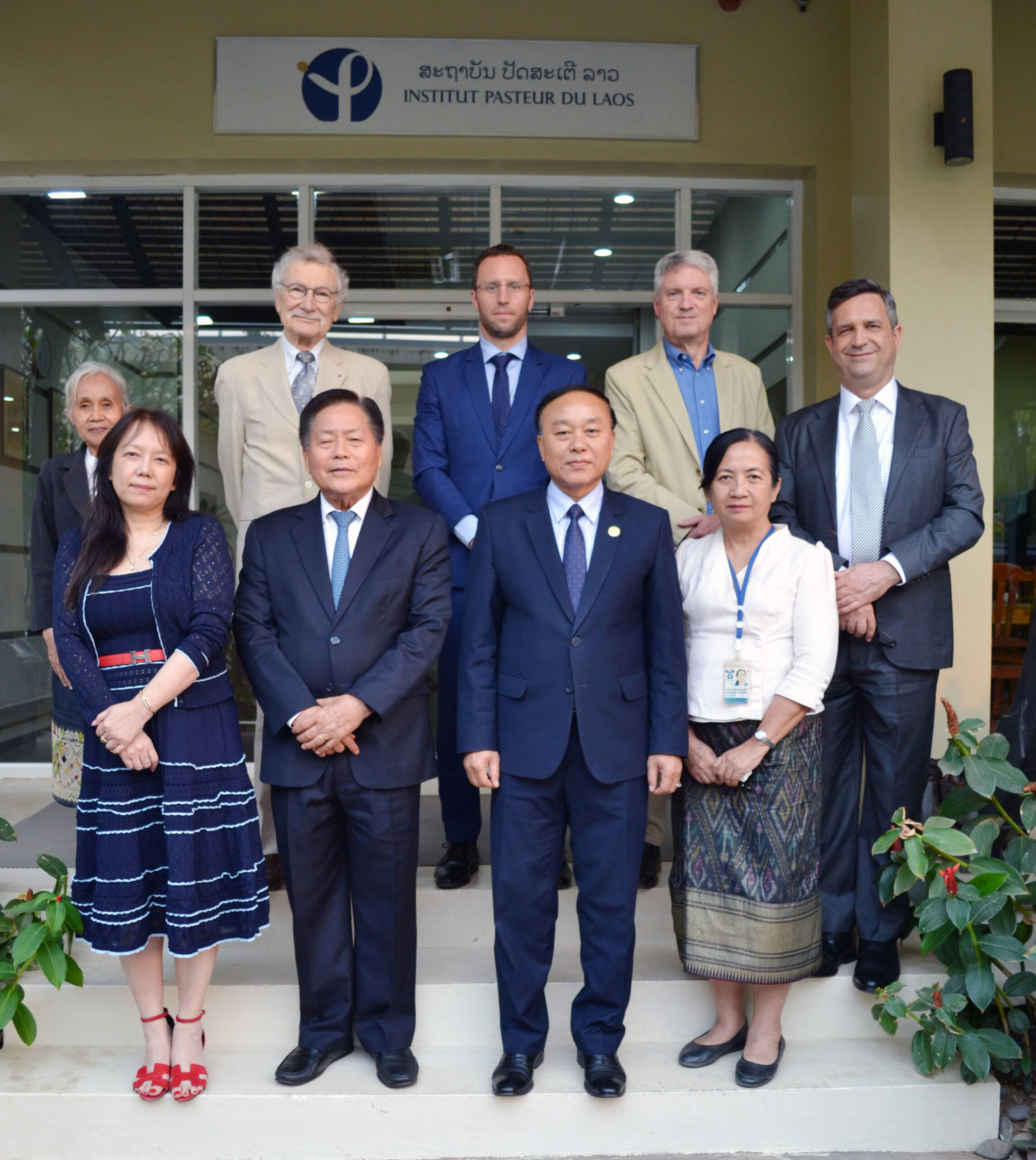Serosurveillance of vaccine preventable diseases and hepatitis C in healthcare workers from Lao PDR
Project leader: Antony Black
Member of staff: Keooudomphone Vilivong

Background:
Healthcare workers (HCW) have increased risk of exposure to infectious diseases and infected HCW represent a potential source for onward transmission of pathogens to susceptible patients. It is important that these risks are minimized, both by reducing exposure and by vaccination in the case of vaccine-preventable infections. In the Lao PDR, the 18,017 HCW (2005), corresponded to a ratio of only 3.21 per 1000 population. Whilst there are no data on the immunity of Lao HCW against important infectious diseases, exposure is probably high considering that the lack of resources undermines vaccination coverage and post-vaccination follow-up for this important risk population. In addition, low rates of childhood vaccination within the country and waning of vaccine-induced antibodies in adults further exacerbate their risk.
Many countries advise that HCW should receive 3 doses of HBV vaccine. Furthermore, if there is no evidence for immunity to measles, mumps and rubella, 2 doses of vaccine are recommended. Similarly, a booster for diphtheria, tetanus and pertussis and varicella vaccine should be given to non-immune HCW. Other recommendations include management of risk of infection by increased awareness and protection. Nevertheless, in Lao PDR there is currently no national policy with respect to immunisation or serological screening of Lao HCW.
The objective of this cross-sectional seroprevalence study was to determine the level of vaccine coverage, exposure and risk of infection in Lao HCW against HBV, HCV, measles, rubella, tetanus, diphtheria, and varicella zoster.
Activities
1128 HCW were recruited from 3 central, 2 provincial and 8 district hospitals within Vientiane Capital, Huaphan and Boulhikhamxay provinces in Lao PDR. Following informed consent, 9ml of venous blood was collected and age, sex, length of time in the job, job description and numbers of children and self-reported vaccination history were recorded. All participants gave their written informed consent. Results from the HBV and HCV serological testing were reported to the participants and anonymous data were shared with the hospital management according to the informed consent. The study was authorized by the Lao National Ethics Committee for Health Research.
Table 1. Age-stratified seroprevalence of HCW. Anti-diphtheria, anti-tetanus and anti-HBs represent protective levels of antibodies.
Only 53.1% of the HCW had protective anti-hepatitis B surface antigen antibodies with 48.8% having anti-hepatitis B core antibodies, indicating previous exposure and 8.0% were hepatitis B surface antigen carriers. 3.9% were hepatitis C seropositive. Measles and rubella antibodies were detected in 95.4% and 86.2% of the HCW, with 11.9% of females being unprotected against rubella. Antibodies against varicella zoster, tetanus and diphtheria were detected in 95%, 78.8% and 55.3%, respectively (Figure 1). Seroprevalence varied according to age, gender and number of children (Table 1).
Our data show that an unacceptably high proportion of Lao HCW remain susceptible to infection with hepatitis B, diphtheria, tetanus and rubella. Some public health investigators recommend serological testing of HCW prior to employment. However, this is not feasible in Lao PDR. Thus, considering scarce resources, we recommend systematic vaccination of Lao HCW whenever the vaccine is available. Furthermore, the high prevalence of chronic hepatitis B and C in HCW suggests that risk management strategies should be enforced to protect both HCW and patients.
Finally, the HCW attitude towards their own vaccination is likely to mirror their permissive attitude to vaccination in general. Therefore, vaccination awareness campaigns for HCW in hospitals would be of very broad benefit. As a minimum, a risk awareness strategy is warranted in this context in addition to 3 dose HBV vaccination for all Lao HCW, irrespective of vaccination history.
Reporting
These data have been reported to the Lao MOH.
Manuscript:
Black AP, Vilivong K, Nouanthong P, Souvannaso C, Hubschen JM, et al. (2015) Serosurveillance of Vaccine Preventable Diseases and Hepatitis C in Healthcare Workers from Lao PDR. PLoS One 10: e0123647.
Partners
+ National Center for Laboratory and Epidemiology, Vientiane, Lao PDR.
+ Vientiane central hospitals; Mitthapab, Settathirath and Childrens.
+ Vientiane district hospitals; Sykhod, Chantabouly, Sysatanak, Xaysetha.
+ Provincial Lao hospitals; Huaphan and Boulhikhamxay.
+ National Immunization Programme, Ministry of Health, Lao PDR.

Figure 1. Tetanus antibodies according to gender of HCW. Numbers above columns represent number per group.







